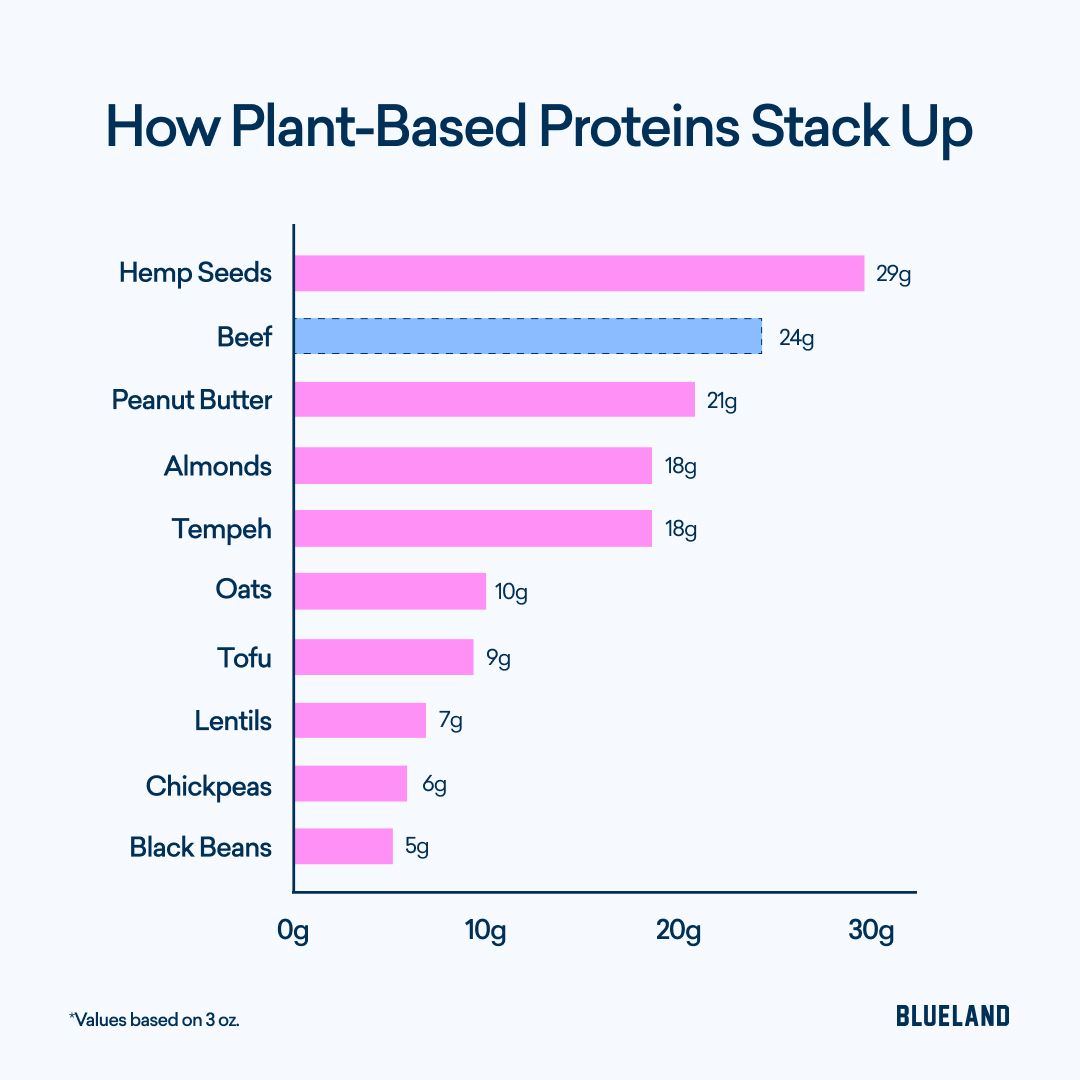CONSCIOUS CONSUMERISM
The Power of Plant-Based Protein
Written by Chelsea Burns, Content Editor
Published: January 20, 2023
Updated: January 23, 2025


“Where do you get your protein?” might be the question that plant-based eaters get asked the most. The answer: Plants! While meat might be the most commonly known protein, it’s not the only source. “It's absolutely possible to meet protein and other nutrient needs without meat,” Cynthia Sass, RD, a dietitian who specializes in plant-based nutrition told TODAY. “From a young age we're taught that our bodies need meat. In reality, our bodies need key nutrients that are found in meat, but we can obtain adequate amounts from plant-based foods.”
Not only is this good news for those who want to go plant-based, it’s also a win for the planet! “Studies have found that beef production creates roughly four to eight times the emissions from pork, chicken or egg production, per gram of protein, and all have a larger climate-change footprint than plant-based proteins like soy or beans,” according to The New York Times. (Read more about the impact of meat on the planet) Below is a graph that shows exactly how common plant-based protein alternatives stack up against beef.

So, just how much protein should you be eating? The Mayo Clinic recommends 15-30 grams of protein per meal. That may sound like a lot, but it adds up quickly! Below are some tips on how to build a high protein plant-based meal.
-
Think of pulses (beans, lentils, peas!) as the main focus and build around them! (i.e. a burrito bowl or salad with chickpeas)
-
Accessorize your food! For instance, if you’re eating oatmeal for breakfast, load it up with other plant-based proteins like hemp seeds, peanut/almond butter, and chia seeds. Bonus points if you make it with soy milk which has 8g of protein per cup.
-
Experiment with seasonings! Plant-based ingredients like tempeh, tofu, and lentils can easily be subbed in where you would usually opt for meat, especially with the right spices and sauces. Try Foodie Takes Flight’s Shredded Tofu Bulgogi

